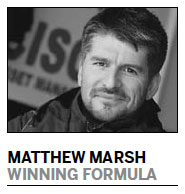
Formula 1 is incredibly complex. The technical and sporting regulations are continuously evolving in reaction to what teams dream up and how drivers behave. In the constant battle between poacher and gamekeeper, the rulebook is several times longer now than it was 30 years ago. At last weekend's German Grand Prix, the subject of debate was the spirit as well as the letter of these rules.
On Sunday morning, the stewards concluded the Red Bull Racing team's engine map (the program that controls it) did not breach the text of the regulations as currently written. The corollary, of course, is that the map did not comply with the intention of the rules - which is why the FIA's technical delegate made his report. (And why the wording has been changed to tighten the definition in time for this weekend's event in Hungary.)
Sebastian Vettel was not so lucky with his own personal interview with the stewards. On the penultimate lap, the German overtook Jenson Button by driving across the white lines that define the track. The reigning champion suggested the painted curbs and "run off" area provide less grip and that he chose this route only to avoid the possibility of collision with the McLaren driver. In reality, Vettel was able to reduce the steering angle and lateral loads on his car and thus get onto the power earlier than Button.
It was smart of the stewards to demote Vettel from second to fifth - and not just by the one place he had gained. Otherwise, it would seem worth taking the risk of a penalty for such dubious driving.
Sebastian had kept within striking distance of Fernando Alonso, but lost second position to Jenson Button after being delayed, slightly, by the other McLaren. A puncture on the second lap had put Lewis Hamilton to the back of the field. After a pit stop, he found himself behind Vettel - but a lap down.
With his own chance of victory gone, Hamilton could have chosen not to interfere with the leaders. But there is always the chance that a safety-car period will provide the opportunity for cars on the lead lap to make up lost time. Back-markers, as they are called, must not impede the leaders (and will be warned with a blue flag if they do) but are quite within their rights to go faster.
It was probably happy coincidence rather than Hamilton's intention that passing Vettel cost him the one second that helped his teammate get past at the final pit stops. No doubt it was annoying, but Hamilton was completely within the letter and spirit of the regulations.
After a successful career on the track, Matthew Marsh now works at JMI - the world's leading motor sports marketing company. He can be reached at mmarsh@justmarketing.com.
(China Daily 07/27/2012 page9)